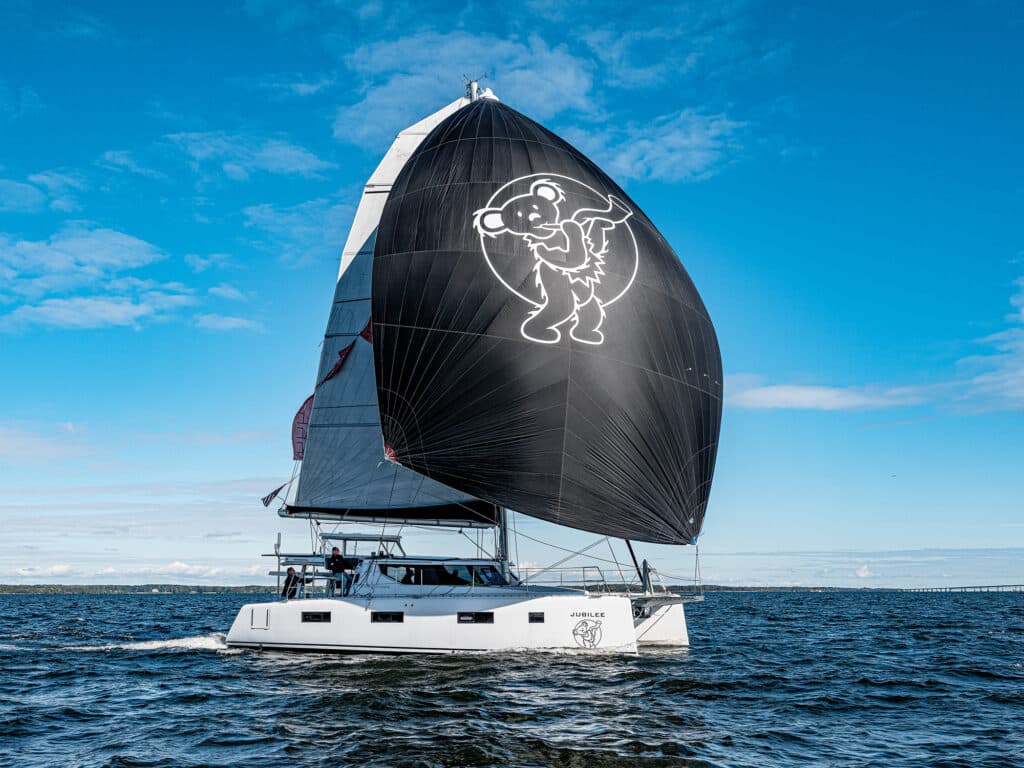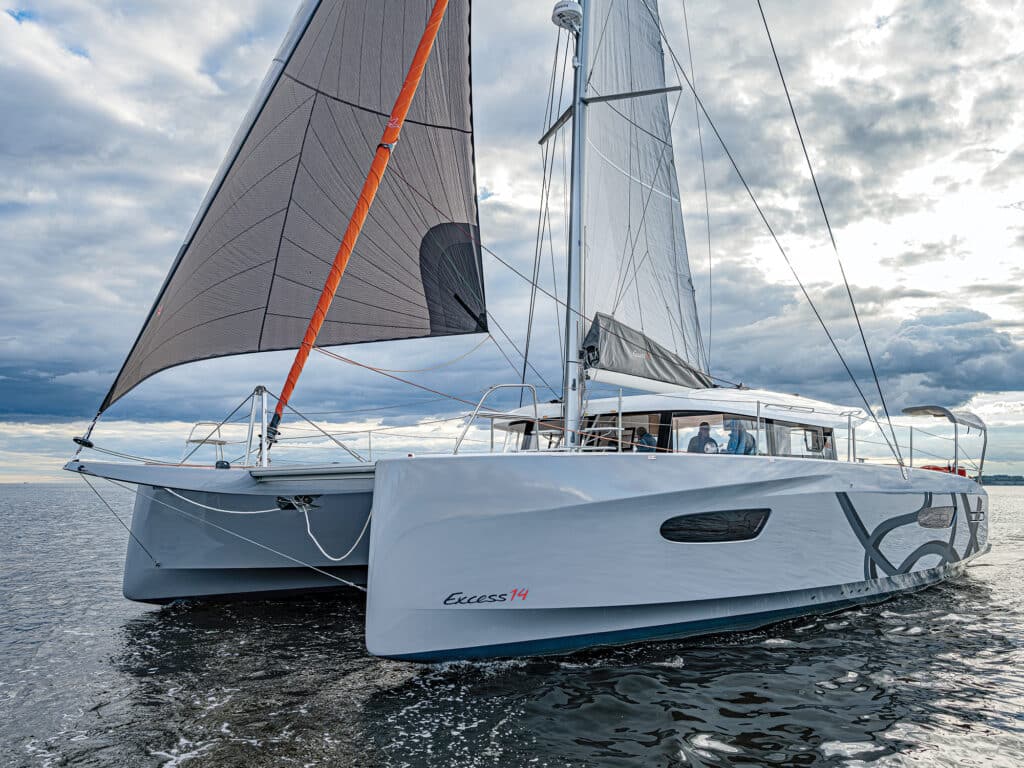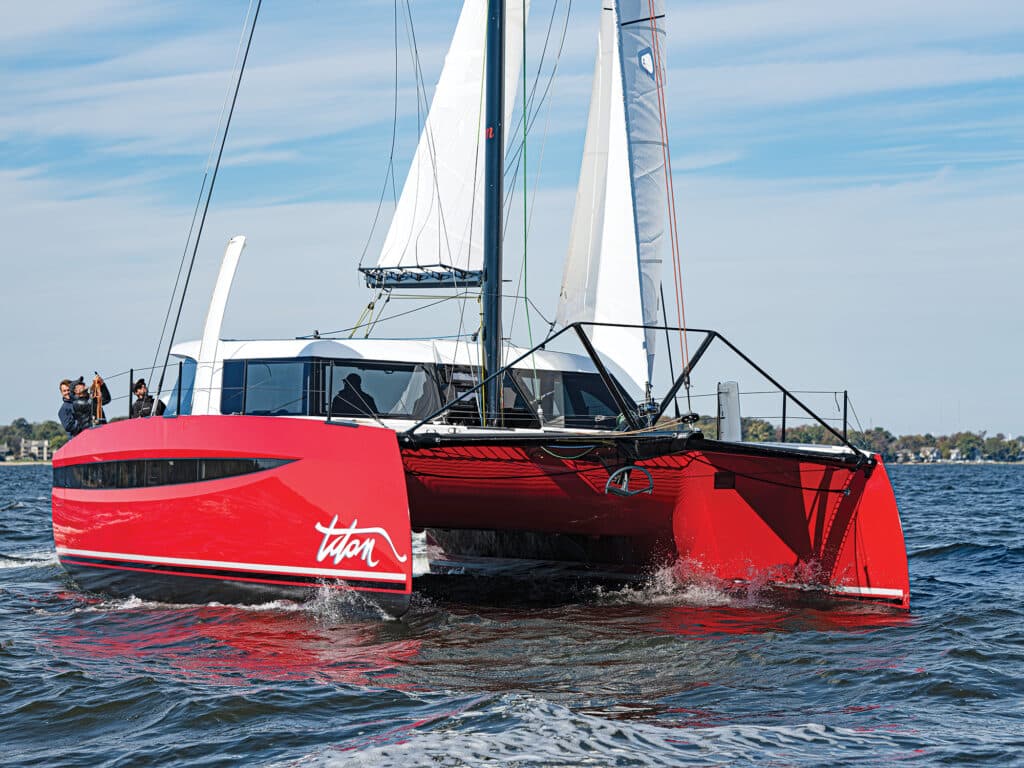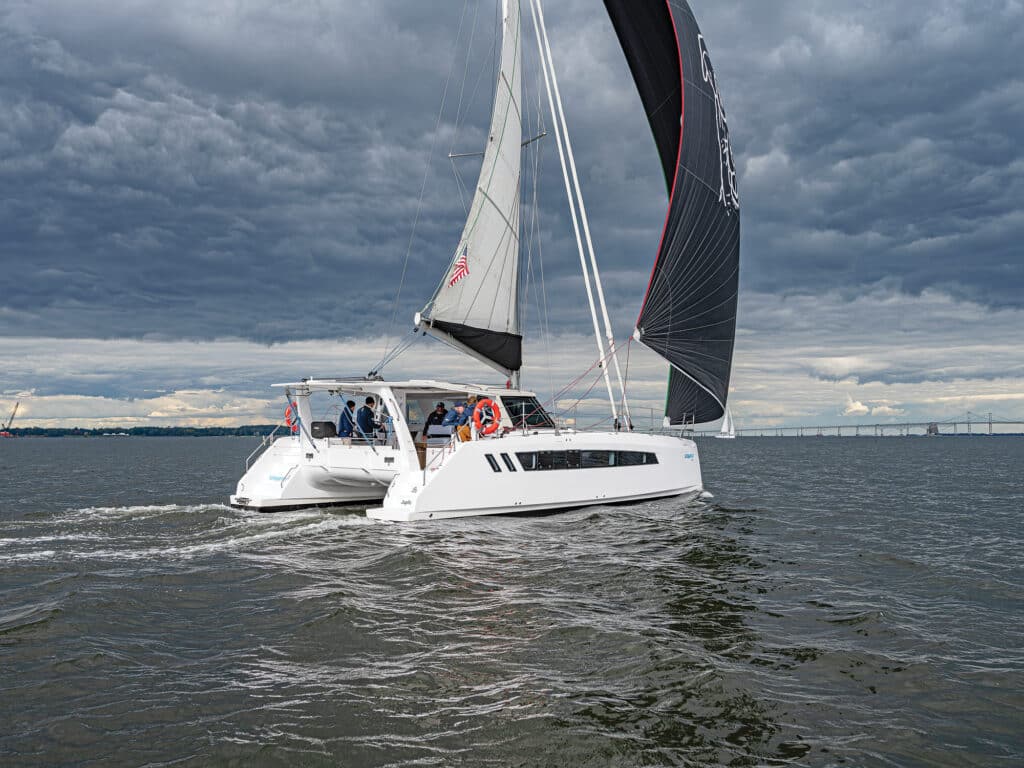
While strolling the docks of the Annapolis Sailboat Show each fall for, let’s say, at least the past decade, one thing has become abundantly clear: Between the rows of charter catamarans lining the docks of the so-called Vacation Basin and the ubiquitous lineup of cats (and trimarans) on display on the Spa Creek Marina piers, the twin-hull phenomenon continues to resonate, and it easily remains the fastest-growing segment of the sailboat universe. That anecdotal observation was backed up by hard numbers in the 2024 Boat of the Year fleet, with more than half the contestants being multihulls.
Fittingly, then, the most competitive category in this year’s contest was this class of four cruising cats. Amazingly, in features and layouts, each nominee was decidedly different from the others, a true benefit to potential owners, who now more than ever have real choices to ponder.
Winner: Vision Yachts 444
It’s hard to say if it’s a definite advantage, but in recent Boat of the Year contests, when inspecting boats with their owners aboard—folks who have put some hard miles under their keels, and who can speak with authority on the positives and negatives of their vessel—the track record shows that such nominees do very well. Which is the case with the Vision 444, whose owner took delivery of the boat at its building site in Knysna, South Africa, cruised to Mozambique, and then sailed it up the Atlantic Ocean to the Caribbean.
Judge Mark Pillsbury picks it up from there: “Many of the big cruising cats that we step aboard are a compromise by design because some of the fleet will go to private owners and the rest into charter. The Vision 444 was different, and after a 14,000-mile shakedown cruise, it clearly reflected the thinking of its owner, who was aboard every step of the way. This is a pure cruising cat, and a fine one. Gear was of good quality and well-sorted. Living accommodations were practical and proven. And build quality was readily apparent because the boat looked terrific after all those hard miles. I think it’s one of the only cats I can recall having a full and proper nav station. And the walk-in workshop forward in the starboard bow? Brilliant.”
Runner-up: Excess Catamarans 14

Text> Pillsbury has sailed the complete range of Excess cats, a relatively new brand from Groupe Beneteau, and has a unique viewpoint on how the range has evolved: “Each of the first three Excess catamarans we looked at brought us something new to talk about, and the latest, the 46-foot Excess 14, didn’t disappoint. The builder says that they want to try new things as they expand the lineup, and with the 14, they let the design team of VPLP push off in a couple of new directions when it comes to hull shape, and the width and depth of the keels to improve sailing performance. Unfortunately, we had pretty light wind for our sea trial in Annapolis, but in under 5 knots of breeze, we were still able to see speeds in the 3-plus-knot range. Visibility from the helms was good—our entire judging team are fans of the steering stations, located well aft and outboard— and the boat was easy to move around on. The 14 fits very well in what the builder is aiming to accomplish.”
Runner-up: HH Catamarans HH44

Text> Unfortunately, due to a shipping snafu, this latest offering from HH Catamarans arrived too late to Annapolis to be displayed at the boat show. But it did make it in time for the sea-trial portion of the Boat of the Year contest. The judges were very pleased that it did, for on a windy test sail, the 44 had the opportunity to strut its stuff, so much so that the panel awarded it with the Judge’s Special Recognition prize.
Runner-up: Seawind Catamarans 1170

The Seawind collection of cats has seen more than its fair share of success in previous Boat of the Year contests. As judge Tim Murphy summarizes, the builder’s new 38-footer is carrying on with that positive tradition: “Our test boat, Hull No. 2, was built at the company’s primary facility in Vietnam, but going forward with the 1170, the line will be produced in a new plant in Turkey to service the European market. The infused hull is vinylester throughout with a PVC core; it’s a good, cost-effective choice that avoids osmosis. Foam is perforated and ‘double-cut’ with kerfs around curved surfaces. It has a Mastervolt lithium-ion battery system, no genset, but with 990 watts of solar power (an optional 1,320 watts is available). I like the cabin top/boom relationship: It doesn’t invite lounging guests to lounge in the boom’s path, but does give the operator easy access to the entire foot of the mainsail. The galley is down—a good layout on a smaller cat. The sail plan is simple but effective. This is a very solid couple’s boat.”








